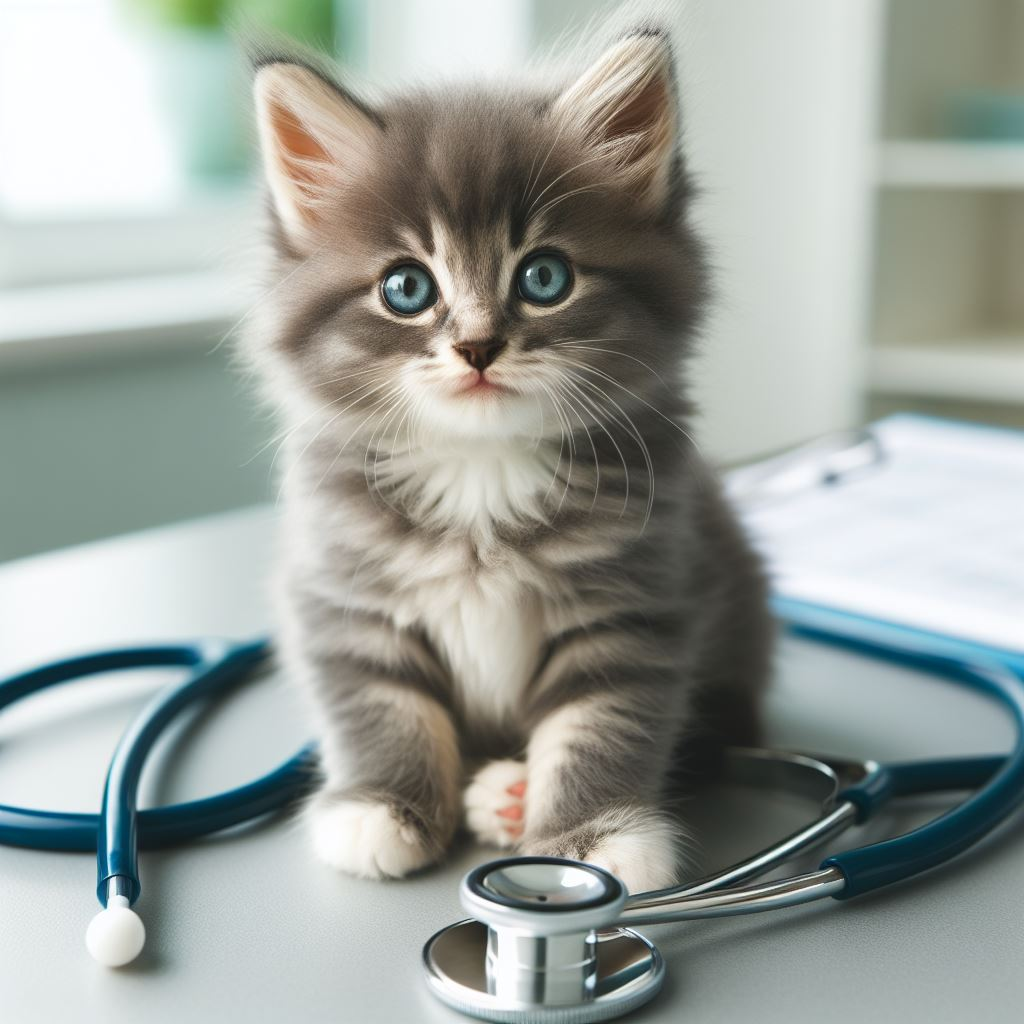
When is the best time to spay my cat after it has kittens?
Seeing a litter of kittens for the first time is positively magical! Those tiny mews, the itty bitty beans—utter bliss. But once the initial euphoria wears off, responsible pet parents have some important decisions to make. At the top of the list: When should you get mama cat spayed after she has kittens? This crucial call affects her health and prevents surprise litters down the road. So, let’s dive into the furry details!
Key Factors to Consider Before Scheduling Kitty’s Spay

Spaying too early or too late both have risks. To find the sweet spot, keep these essential factors in mind:
-
- Weaning Period: The #1 consideration is waiting until the kittens fully wean. Mama cats usually wean babies around 6-8 weeks after birth. Spaying mid-nurse can decrease milk supply or lead to mastitis.
“When Mittens had her first litter last spring, everything went smoothly. The tiny furballs grew quickly and were eagerly nibbling kitten food just after 6 weeks. That’s when I scheduled her spay surgery, ensuring the kittens were ready to be fully weaned so Mittens could focus on recovering.”
-
- Health Status: Ensure mama is fit and recovered from birthing before surgery. Watch for signs of infection or illness post-delivery.
“My friend’s cat Zoe seemed lethargic with a low appetite after delivering her kittens. The vet found she had a uterine infection, so they delayed her spay surgery by a month until Zoe was back to full health.”
- Behavior Changes: Monitor for early heat signs like excessive meowing, rubbing, and restlessness. Mama cats can restart their cycle 3-4 weeks after birth!
When Can You Actually Schedule Mama’s Spay?
I know, I know—you want specifics! The true optimal timing ranges from 4-8 weeks post-delivery. Spaying while kittens are still somewhat nursing is possible, but waiting until fully weaned around 6 weeks gives the best outcome. Here’s why:
“Can you believe Luna started yowling constantly again only a month after having her kittens?! I noticed her backing her rear into everything suddenly too. Sure enough, the vet confirmed she had gone into heat again so fast! Good thing I already had her spay scheduled for later that week once the litter was weaned.”
What Signals Mama Is Ready to Mate Again?
Think Mama Cat’s motherly duties might keep her out of the heat for a while? Think again! Her cycle revs back up quicker than you can say “catnip!”
-
- Many felines start their heat as early as 4-6 weeks after delivering kittens.
“After having her kittens, my cat Luna began meowing loudly day and night. She also started rubbing on everything and demanding constant pets! When she flashed her rear at my other cat, it hit me: oh no, she’s in heat already!”
- In heat signs involve behaviors like vocalizing, marking territory, and overly affectionate displays.
- It’s essential to sequester mama cats from males to prevent Whoops…another pregnancy!
To Spay During Weaning or After? The Vet Weighs In
Spaying while kittens are still nursing is sometimes necessary, but it carries higher risks:
“According to my vet, Mittens’ kittens were still too young and dependent for her to be spayed safely. She recommended waiting until at least 4 weeks, when kittens naturally start eating kitten food too. At that point, they wouldn’t rely as heavily on Mittens’ milk so she could recover more easily.”
The consensus favors waiting until kittens reach full weaning at around 6 weeks old. This timeline enables mama cat’s body to bounce back post-op and prevents complications.
Community Cats & Spay/Neuter Programs: How You Can Help
You’ll often spot unowned “community cats” roaming outdoors. These free-range felines lead tough lives, facing hunger, illness, and high reproduction from lack of spaying/neutering. But you can help!
Many rescue groups offer free or low-cost spay/neuter services for unowned cats. They’ll trap the kitty, get them fixed up, and return back outdoors. This compassionate act enhances their lives while reducing stray populations. Call your local humane society today to learn more!
Why It Does a Kitty Good to Get Spayed
Spaying offers ample perks for feline health and behavior:
-
- Decreased Cancer Risk: Removing reproductive organs erases chances of uterine or ovarian cancer down the line.
“According to my vet, 1 out of 4 unspayed female cats develops cancer in her reproductive organs later in life. That scary stat convinced me—better to spay Mittens now than deal with cancer risks when she’s older!”
-
- Longer, Healthier Life: Data shows spayed kitties enjoy longer average lifespans compared to intact cats.
- No More Heat Cycles: End the howling, yowling, and restless behaviors cat parents know all too well!
“Luna used to caterwaul for weeks on end when she went into heat—driving me bonkers! I’m so relieved she got spayed because now our home is finally peaceful again.”
- Happier Disposition: Removing those hormone fluctuations can lead to a calmer, sweeter pet all around.
Talk to your veterinarian about why spaying post-kittens provides major benefits now and down the fuzzy road ahead!
What Does the Spay Procedure Actually Involve?
Aka…What happens when you get kitty spayed?
The spay surgery, aka ovariohysterectomy, removes entire female reproductive systems—ovaries and uterus. It’s routine, done under general anesthesia, with little risk. Still, your vet will walk you through the required preparations to ensure mama cat safely undergoes this quick, life-saving procedure. She’ll be groggily snuggling you again before you know it!
Caring for Mama After Her Spay
Post-op care ensures your queen heals swiftly and comfortably:
-
- Rest & Recovery: Pamper Mama with rest in a peaceful environment, limiting activity near the incision site.
- Incision Inspections: Check the spay incision twice daily for unusual swelling or discharge indicating potential infection.
“When Mittens came home post-spay, I checked her incision closely for the next 10 days. Thankfully I saw no redness or fluid that might mean trouble.”
-
- Med Management: Administer prescribed medications exactly as directed to ease surgical pain.
“The vet sent Luna home with oral pain meds after her spay surgery. She hated the sticky syrup but it clearly helped relieve her discomfort while healing.”
- Follow-Up Appointments: Your vet examines kitty during future visits to verify proper healing and remove sutures if needed.
Helping Mama Feel Better While Recovering
The first 1-2 weeks post-spay are crucial. Be vigilant about:
-
- Diet: Feed high protein and nutrient-rich foods to assist the healing process. Ask your vet to suggest recovery diets.
- Restricted Activity: Slowly reintroduce exercise and playtime. Avoid letting mama leap or strain herself until fully mended.
“The vet warned me to limit Mittens’ activity after her spay surgery. No jumping on counters or tearing around the house. I made sure to provide step stools and calm play sessions with feather toys instead.”
- Creature Comforts: Lavish mama cat with extra affection and soothing pets in her comfy recovery space.
How Spaying Benefits Feline Health Long-Term
The gifts of spaying keep on giving with these lasting perks:
-
- Prevention Is The Best Medicine: Spaying significantly cuts risks of multiple cancers and infections down the road.
- Increased Longevity: Stats show altered cats outlive intact ones by years. Go ahead, spay for more time to cuddle!
“According to the vet, Mittens likely added 3-4 more years to her lifespan by getting spayed. That’s more time being pampered as the furry queen she is!”
- Calmer Everyday Behavior: With hormones in check, spayed kitties tend to be less territorial and aggressive longer.
The Takeaway: Optimizing Mama Cat’s Health With Timed Spays
When mama cat has a litter, deciding her ideal spay timing protects health now and beyond. By waiting for full weaning, providing thoughtful aftercare, and giving her body proper recovery time, pet parents help ensure low-risk surgery outcomes and improved lifelong well-being.
As always, partner closely with your veterinary team to tailor the approach to your special girl’s needs. They can offer personalized guidance at every step while you revel in those precious new kittens!


Leave a Reply